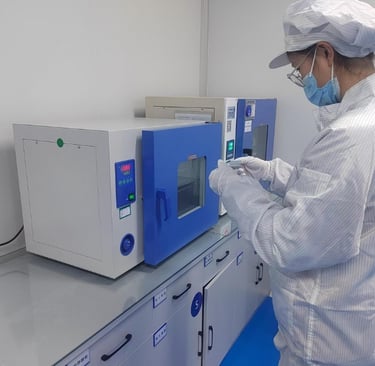Beyond the Spec Sheet: 5 "Hidden Metrics" Every Savvy B2B PPF Buyer Must Know
Blog post description.
10/24/20253 min read


Dear B2B Buyer, when evaluating Paint Protection Film (PPF), thickness and warranty length are undoubtedly your first screening criteria. However, the real product differentiation often lies in those "hidden metrics" not easily found on the data sheet. These metrics directly impact long-term product performance, your after-sales costs, and end-user satisfaction. As a discerning procurement expert, knowing how to choose a PPF supplier requires a deep understanding of the following five key points.
1. The "Pedigree" of the Base Film: It's Not Just TPU, But Whose TPU
Almost every manufacturer claims to use "imported TPU," but there's a world of difference.
Source and Stability: Top-tier suppliers like Lubrizol or BASF provide aliphatic TPU, which has a stable molecular structure and inherently possesses superior UV and yellowing resistance. In contrast, cheap aromatic TPU degrades rapidly in sunlight, leading to severe yellowing. Asking your TPU base film supplier for the specific brand and type is the first step in judging product longevity.
Batch Consistency: An excellent factory ensures consistent performance across every batch of TPU base film they source. Smaller factories often have complex and inconsistent material sources, leading to unpredictable product performance and endless after-sales headaches for you.
2. The "Formula" of the Coating: The Soul of Self-Healing
Scratch self-healing is a core selling point of PPF, but its effectiveness and durability vary immensely.
Core Technology: The coating isn't necessarily better just because it's thicker; the key lies in its chemical formula. High-quality coatings use patented technology that allows them to flow quickly and fill scratches at room temperature or with low heat (like sunlight), maintaining this performance for years. Inferior coatings might show good initial healing but quickly lose their effectiveness due to aging and abrasion.
Stain & Hydrophobic Properties: An often-overlooked point is that top-tier coatings not only self-heal well but also possess excellent stain resistance and hydrophobicity, making the vehicle easier to clean and maintaining its gloss long-term.
3. The "Intelligence" of the Adhesive: The Guardian of Installation and Removal
The adhesive layer is the bridge between the film and the vehicle's paint, and its importance cannot be overstated.
Initial Tack & Installer Friendliness: The ideal adhesive should have "controlled initial tack"—low tackiness during dry positioning, allowing the installer to adjust and reposition the film repeatedly. When applied with a slip solution, the tackiness builds steadily to form a permanent, strong bond.
Residue-Free Removal: This is the most critical part of paint protection film quality testing. Products with inferior adhesives can leave stubborn, difficult-to-remove residue on the paint years later, sometimes requiring polishing that damages the original clear coat. This leads to massive after-sales costs and customer complaints. Ensure your supplier can provide proof of "residue-free removal" testing.
4. Liner Paper & Coating Process: A Reflection of Precision
This directly impacts product yield and installation efficiency.
Liner Paper Flatness: High-quality liner paper ensures the film does not develop creases during rolling and transport and guarantees precise dimensions during cutting.
Uniform Coating Application: Advanced precision coating machines ensure the coating and adhesive are applied with absolute, consistent thickness. Any inconsistency can lead to orange peel, water spots, or localized bonding failure. This is a technical gap that small workshops cannot overcome.
5. Real Aging Test Data: Letting Time Tell the Story
A warranty is a "promissory note," but real test data is the product's "medical report."
Beyond QUV Testing: While many factories perform standard QUV testing (simulating UV aging), top-tier factories conduct more severe tests, such as thermal aging and chemical resistance testing (against acid rain, bird droppings, tree sap, etc.).
Focus on the "Yellowing Index": When evaluating test reports, don't just look at "whether it yellowed," but pay attention to the specific PPF yellowing index (such as the Delta E value). This value quantifies the degree of yellowing; a lower value indicates stronger anti-yellowing capability. Ask your supplier for Delta E value comparisons after different durations (e.g., 500 hours, 1000 hours) of QUV testing—this is the gold standard for measuring weatherability.
